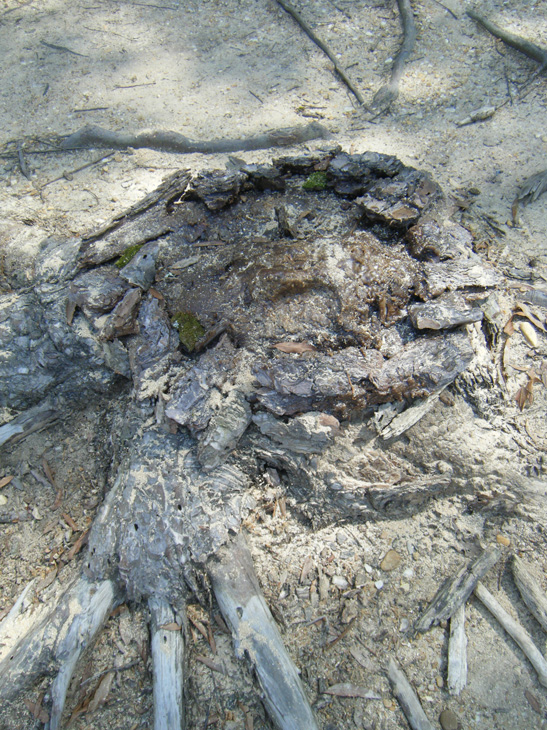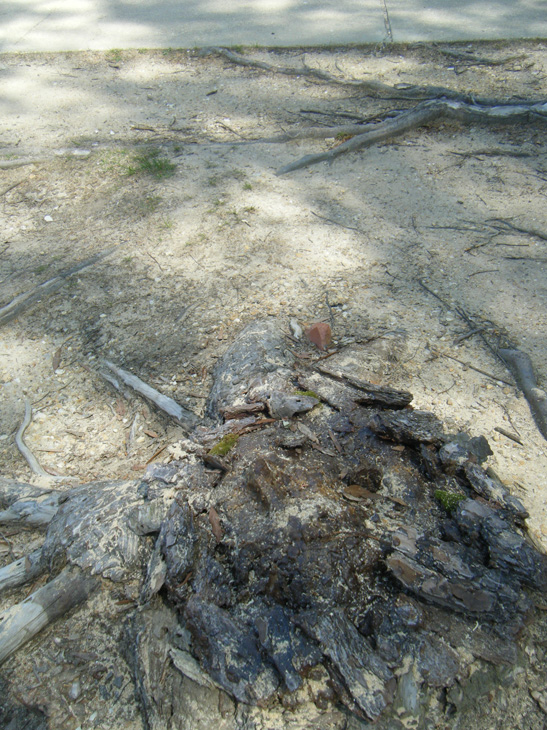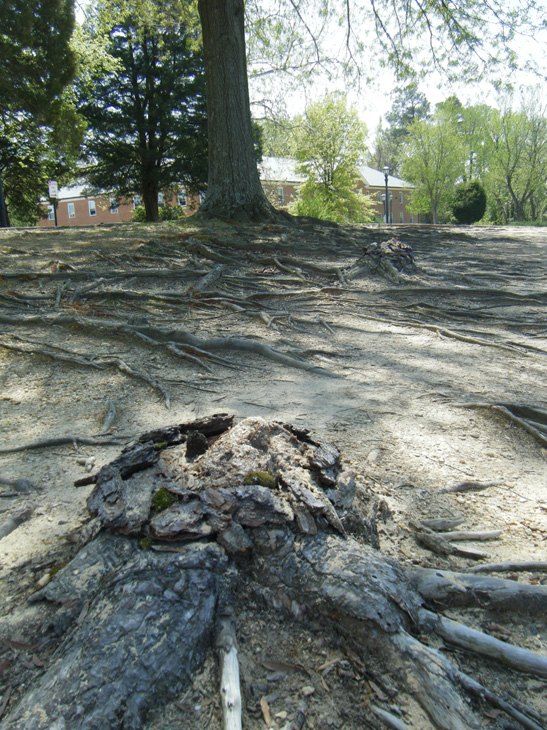Sculpture Studio Portfolio (SP10)
/Caitie Harrigan
Project 3: Site, Place, and Installation
The category of “site-specific” or “installation” artwork covers an infinite amount of ideas. For my piece, I narrowed it down to thinking about something that has always plagued me: the idea of tree stumps, half of a body of a tree left in the ground, cut down too often for convenience rather than building around it. To create a dialogue between a viewer and a tree stump, I decided to create half tree, half human-like faces that would come out of the stumps as a way for a human to identify with the tree’s “carcass,” a way to begin a person’s thought about how they themselves value trees and ultimately nature itself. The site I chose was a small plot of earth edged by four sidewalks, a place commonly walked by, with two live trees and three tree stumps varying in size. What attracted me most to this location were the roots of all the trees, dead and alive, that were above the ground and visible: like long arms or fingers of the live trees reaching downwards to hold on to the stumps.
The three pieces for the three stumps consisted of one full face, one half face, and one unidentifiable “blob” made of the same materials. From their armatures, the pieces were layered with brown beeswax mixed with sawdust to create a rough, bark-like texture, while incorporating what remains of a tree after it is cut: sawdust, almost like blood. To break up the edges, I added pieces of bark around the form and inside of the form to emphasize the bark texture and make the faces look like they were almost exploding out of the stumps, and to blend the faces in with the stumps. Finally, at the site, I spread sawdust around thee roots themselves and added moss to the faces to look more natural and like they had been there for a long time.


Face One
My intention was for the pieces to be subtle, and I think that they were successful in that regard. Ideally, a person would walk by on their way to class and be surprised when he notices a face, stop to look around at the other stumps, and see the other face and the mid-formation of the third one. And in theory, the person would think, Why are there faces in the stumps? How long have they been here? Have I just never noticed? What does it mean? I really wanted my own hand to be out of this piece, so hopefully a person would even question who made them or put them there, not necessarily first thinking, Oh, it must have been an art student.


Face Two; Face Three
But it is possible that the faces are a bit lost in the wax, and more definition of just basic features such as the eye sockets would have been beneficial. In retrospect, the one face turned out to be angled at a way that it appeared to be looking at the people walking by, so I also think I should have made the other one turned the same way so that it created a really eerie sense of presence of the stumps. And to further emphasize the “body” aspect of the piece, it might have been effective to take wax or more bark and form shapes like hands or arms out of the roots already there, so it would look sort of like a graveyard—but keeping within the theme of subtleness. I am also really interested in thinking about how the faces would have been changed and molded by the elements, and to see if anyone would react positively or negatively to the pieces by adding to them or acting destructively—it would certainly add more meaning to the piece.


All Faces
IMAGES COPYRIGHT TO CAITIE HARRIGAN
Back to Index
This page was last updated:
April 13, 2010 8:01 PM